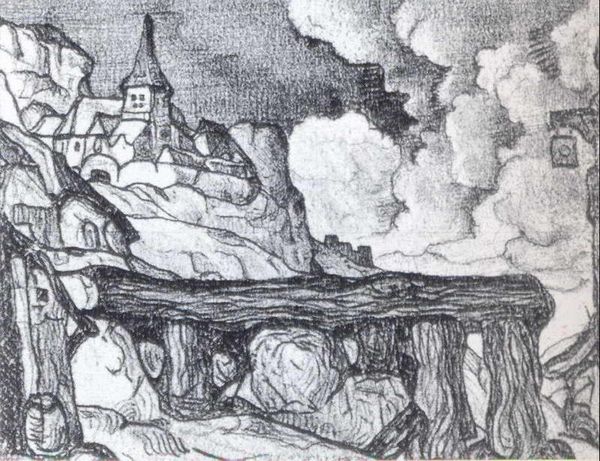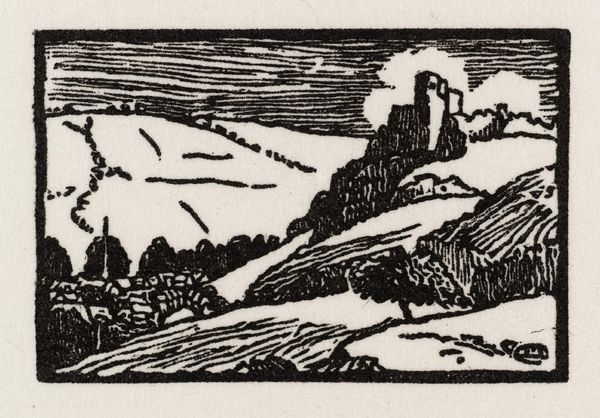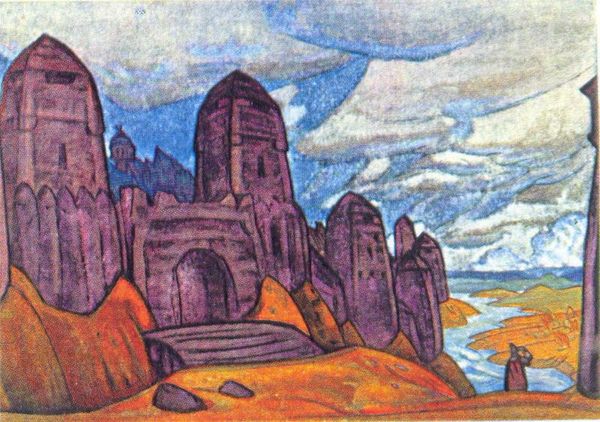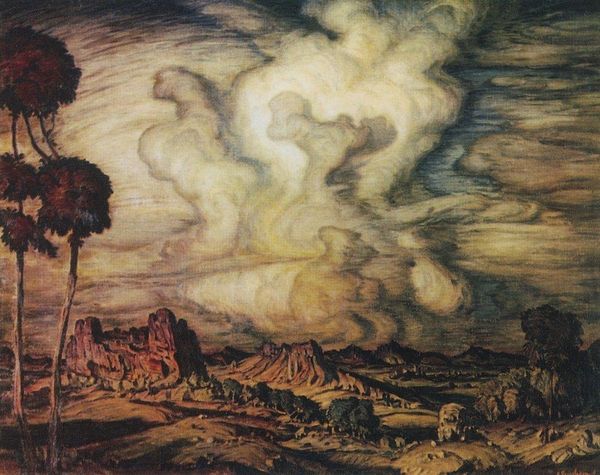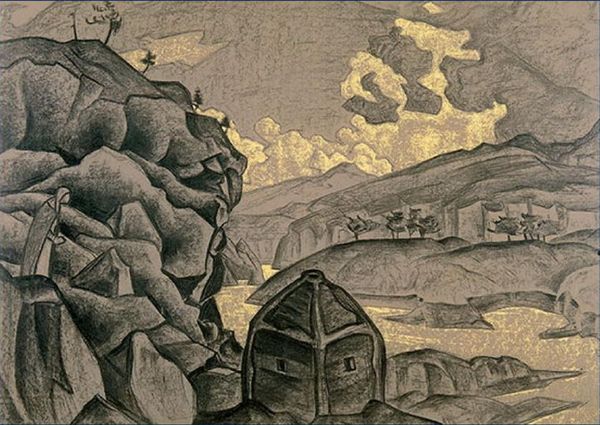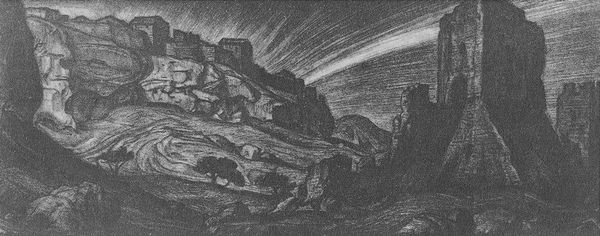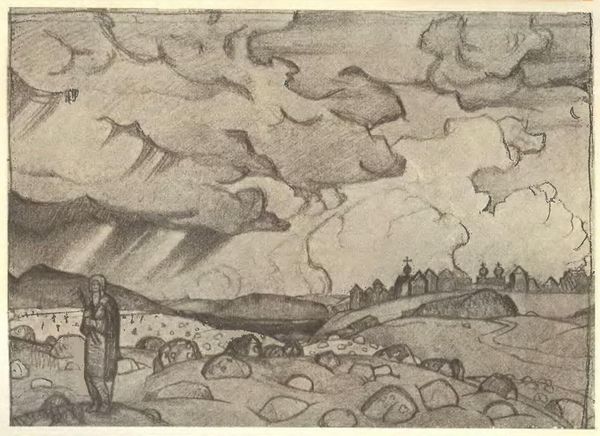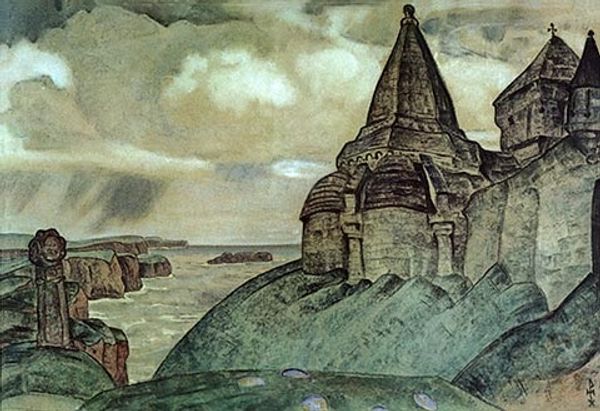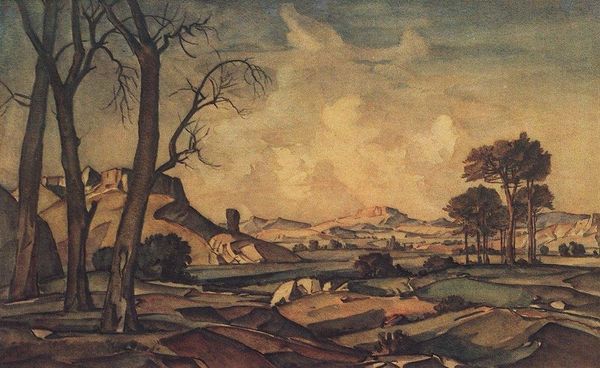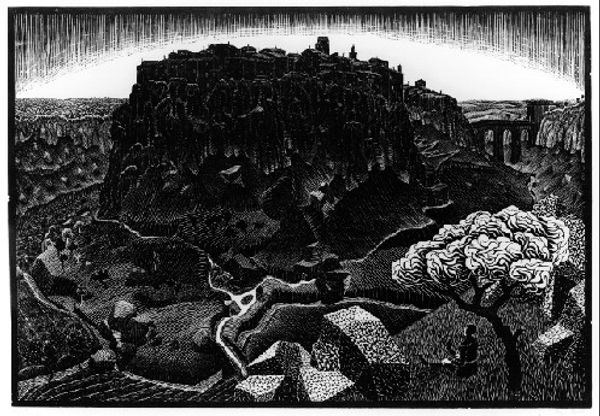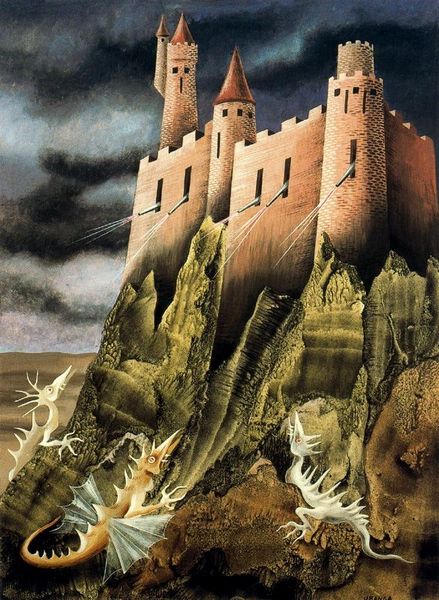
drawing, print
#
drawing
#
art-nouveau
#
ink painting
# print
#
landscape
Copyright: Public domain
Editor: This is "Eastern Altar" by Konstantin Bogaevsky, created in 1919. It appears to be a print. It evokes a sense of both mystery and desolation. What symbols stand out to you in this landscape? Curator: Well, the most potent symbol is, undoubtedly, the altar itself, a severe architectural form atop a stark, rocky hill. It speaks to the endurance of ritual and belief in a world that may be crumbling around it. Note the lone obelisk to the right – a clear phallic symbol implying resilience, even eternal life. What emotions does this landscape evoke? Editor: The jagged edges and the dark palette make me feel uneasy, like something momentous is about to happen or perhaps already has. I also find the water reflecting everything rather compelling. It does add some complexity to the emotional landscape, doesn't it? Curator: Absolutely. Water here is not simply a reflection, it’s a conduit to the subconscious. Bogaevsky uses water, the universal symbol for collective subconsciousness to symbolize how cultural memory shapes our world-view.. Look closer. Are there shadows of similar altars deep within the water, hinting that our own conscious state rests upon ancient foundations of culture and faith? Editor: That is a wonderful connection to collective memory! Now I see how each component, like the monument, trees, and the jagged hills all appear to hint at past times. Curator: Bogaevsky paints an austere emotional portrait. The altar stands tall representing historical continuity with earlier periods. What do you now consider to be the artwork's emotional core? Editor: I initially saw desolation. However, I now appreciate the enduring character of this historical painting. It speaks to something timeless, even defiant in the face of change. Curator: Yes! I learned from our discussion the impact of symbols reflecting hope in places of devastation, inviting interpretations.
Comments
No comments
Be the first to comment and join the conversation on the ultimate creative platform.
